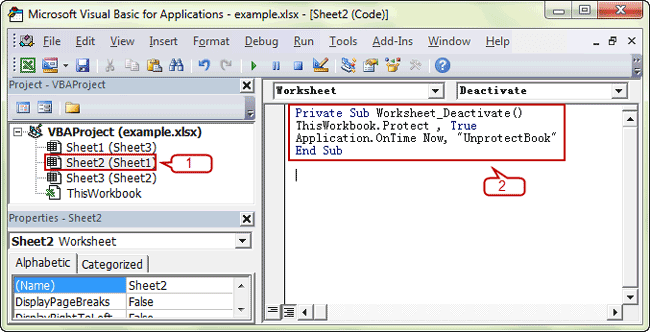

Now + TimeValue("00:00:05") sets the time interval at 5 seconds, at which interval the procedure will run. To run a procedure at specified time intervals (say, from now), use Now + TimeValue(time) viz. TimeValue("20:30:00") will run a procedure at 8.30 pm. 'To run a procedure at a specific time, use TimeValue(time) viz.
Excel application ontime code#
'The procedure should be entered in a Standard Module (select Insert>Module, in VBE code window).

'This procedure uses the OnTime Method to auto increment cell value at specific time intervals, and Stops the procedure on crossing a specific cell value. 'Dim as a Public variable and it will be available to all Procedures in all modules. The procedure should be entered in a Standard Module (select Insert>Module, in VBE code window). This means that the time when the procedure is to run (EarliestTime argument) should be assigned to a variable (use a Public variable to make the variable available to all Procedures in all modules) and then use it to cancel the OnTime.Įxample 1: This procedure uses the OnTime Method to auto increment cell value at specific time intervals, and Stops the procedure on crossing a specific cell value. Note that if you don't pass the time to a variable, Excel will not know which OnTime method to cancel, as Now + TimeValue("00:00:03") is not static, but becomes static when passed to a variable. To cancel a running procedure (using the OnTime method), the precise time of its scheduled run is required. Hence, you will need to cancel the procedure at a certain point or time. If you attempt to close the workbook while a procedure is being run using Application.Ontime, Excel will re-open the workbook, and leave it open post completion of the procedure. Stop or Cancel a Running Procedure (using the OnTime method) To fix a specific time of day for the procedure to run, use "TimeValue(time)". To fix specific intervals starting from now, to run the procedure, use "Now + TimeValue(time)". To cancel an existing OnTime procedure set earlier, specify False. Omitting the Schedule argument will default to True, which sets a new Ontime procedure. Omitting the LatestTime argument will make Excel wait and run the procedure. if you set the LatestTime to "EarliestTime + 20" and if meanwhile another procedure is being executed and Excel is not in ready mode within 20 seconds, this procedure will not run. With the LatestTime argument you can set the time limit for running the procedure viz.

The ProcedureName argument specifies the name of the procedure you want to be executed. The EarliestTime argument specifies the time when the procedure is to be run. The EarliestTime and ProcedureName arguments are required to be specified while the other arguments are optional. The (Excel) Application Object represents the entire Excel application, and is the top-most object in the Excel object model. You can either fix specific intervals, starting from now, when the procedure will run, or you can fix a specific time of day. Using this method you can schedule to run a procedure in the future. OnTime(EarliestTime, ProcedureName, LatestTime, Schedule). Use the Application.OnTime Method to run a procedure at specified intervals or at a specific time of day. Automatically run macros.Įxcel Application.OnTime Method - Scheduling OnTime Events Scheduling Excel to Run a Procedure at periodic intervals or at a specific time of day, with the OnTime Method.


 0 kommentar(er)
0 kommentar(er)
